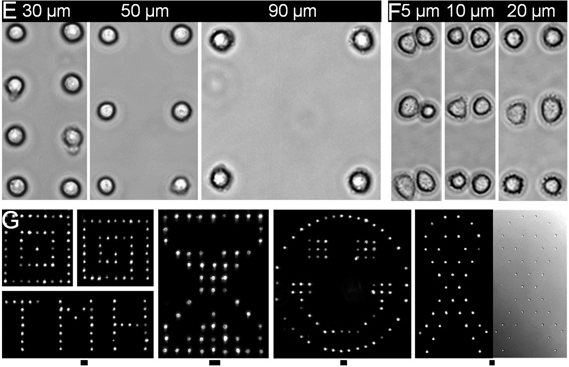New Cellular 'Woodblock' Printing Method Stamps Living Cells In Patterns

Living cells can be printed in just about any shape you like, onto just about any surface you like, thanks to a new technology that evokes both Chinese woodblock prints and children’s toys.
Cell printing might not grab as many headlines as 3D manufacturing printers, but it could be the future of tissue regeneration. Just in December, a Cambridge University-led team announced it had succeeded in printing rat eye cells, a proof-of-concept step on the road to printed eye tissue grafts.
Most existing methods of cellular printing are based on inkjet technology, but a Texas-based team has come up with another approach, inspired in part by woodblock printing techniques that have been used since third-century China. They describe their method, called "Block-Cell Printing" or "BloC-Printing," in a new paper appearing the Proceedings of the National Academy of Science.
Senior author Lidong Qin of the Houston Methodist Research Institute says he and his colleauges thought inkjet-based cell printing was an inadequate method. While inkjet is faster, and allows for researchers to create multiple layers of cells, it also leaves many of the cells damaged or dead. Qin and his team wanted a method that would result in arrays of living, active cells.
The team “started to think for other approaches to prepare a cell pattern,” Qin said in an emailed statement. “We were one day, suddenly inspired by the little stamps kids are playing [with]. The technical mechanism for the kids' stamps is the same as … ancient woodblock printing.”
The basis of the BloC-Printing technique is a silicone mold filled with lots of tiny, hook-like traps. Cells suspended in fluid are run through the mold, and naturally flow into an arrangement of slots that can be arranged in a simple grid shape or, as the photo below shows, into a smiley-face or even an hourglass:

The pattern is left behind on the Petri dish after the mold is lifted up, and the mold can be reused for hundreds of printings, the team says.
“BloC-Printing provides a convenient tool for scientists to produce cell arrays and generate cell protrusions with precision and high throughput,” Qin says. “Such cell arrays and protrusion structures will allow scientists to do cell-based drug screening and study cell-cell communications through gap junctions.”
Without techniques like BloC-Printing, it’s a challenge for scientists to be able to create such structures in a petri dish with living, active cells, Qin added.
Qin and colleagues tested the BloC printing method with metastatic cancer cells and brain cells. With the cancer cells, the researchers could print them in a grid to better examine their growth; with the brain cells, they could watch them form structures with each other.
Printing in 3D or multiple layers is still not quite within the technique’s grasp at present, but the researchers have high hopes. An inkjet cell printer costs between $10,000 and $20,000. But the cost of materials for a single BloC mold are about $1, after which a researcher just needs a Petri dish, a suspension of cells and a syringe.
"We believe the technology has big potential," Qin says.
SOURCE: Zhang et al. “Block-Cell-Printing for live single-cell printing. [Article not yet live]” Proceedings of the National Academy of Sciences, published 10 February 2014.
© Copyright IBTimes 2025. All rights reserved.





















